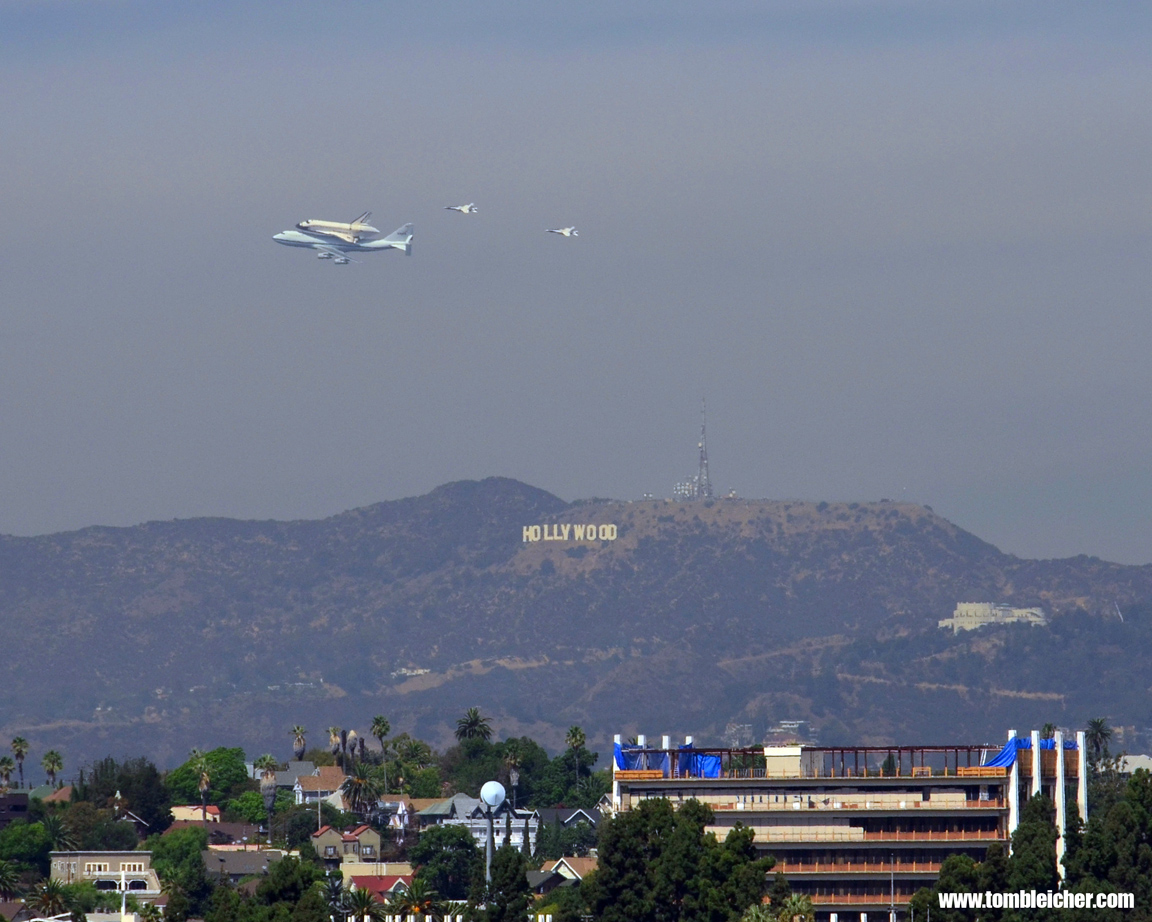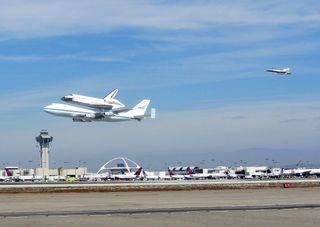
LOS ANGELES — The space shuttle Endeavour has landed for the final time, and its new owners can hardly believe that the historic vehicle is now in their hands.
Endeavour, flying piggyback atop its Boeing 747 carrier aircraft, touched down here at Los Angeles International Airport today (Sept. 21) to wrap up a nationwide farewell tour. The shuttle will stay at the airport for a few weeks, and then be ferried via surface streets to its museum retirement home, the California Science Center, in mid-October.

Museum officials have been looking forward to today since April 2011, when NASA announced that Endeavour was coming their way. So it feels a bit surreal that the shuttle is finally in LA, they said.
"It's pretty incredible, and it's incredibly emotional," Jeffrey Rudolph, president and CEO of the California Science Center, told SPACE.com a few hours before Endeavour touched down.
"We've had many great moments; April last year, when we got the announcement, was the first," Rudolph added. "But this weekend, we actually take custody and care, and know that from now on, Endeavour's in our hands, to be the stewards. It's a pretty special time." [Photos: Shuttle Endeavour's California Sightseeing Tour]

Endeavour's journey to the museum next month will be special as well. Over the course of two days — Oct. 12 and 13 — the shuttle will travel 12 miles (19 kilometers) through the heart of Los Angeles, providing a memorable and unprecedented sight.
"It's going to be an incredible spectacle — the only time ever that you'll see a space shuttle go through an urban corridor like that," Rudolph said. "People are already getting really excited about it."
Get the Space.com Newsletter
Breaking space news, the latest updates on rocket launches, skywatching events and more!
NASA grounded its venerable space shuttle fleet in July 2011 after 30 years of service. The agency is encouraging the development of commercial American spacecraft to take over the shuttles' orbital taxi role while it works to send astronauts to deep-space destinations. In 2010, President Barack Obama directed NASA to send astronauts to a near-Earth asteroid by 2025, then on to Mars by the mid-2030s.
NASA wants at least two private vehicles to be ready to carry astronauts to and from low-Earth orbit by 2017. Commercial robotic cargo flights, on the other hand, should start in earnest next month, with SpaceX's Dragon capsule set to blast off toward the International Space Station on its first contracted supply run Oct. 7.
While Endeavour will never take to the skies again, it will continue to serve the nation as a museum showpiece, said NASA astronaut Mike Fincke.
"People are really going to get a taste of spaceflight, and it's a good reminder that we still have people flying in space, and that we're building a great space future," Fincke, who flew on Endeavour's final STS-134 mission last year, told SPACE.com here today.
The shuttle's long history as America's spaceship has left a strong impression on the public that should last for years to come, he added.
"You ask any kid from 1970 on to draw a picture of what a spaceship should look like, and they all look like space shuttles," Fincke said. "So it definitely resonates within human hearts."
Follow SPACE.com senior writer Mike Wall on Twitter @michaeldwallor SPACE.com @Spacedotcom. We're also on Facebook and Google+.
Join our Space Forums to keep talking space on the latest missions, night sky and more! And if you have a news tip, correction or comment, let us know at: community@space.com.

Michael Wall is a Senior Space Writer with Space.com and joined the team in 2010. He primarily covers exoplanets, spaceflight and military space, but has been known to dabble in the space art beat. His book about the search for alien life, "Out There," was published on Nov. 13, 2018. Before becoming a science writer, Michael worked as a herpetologist and wildlife biologist. He has a Ph.D. in evolutionary biology from the University of Sydney, Australia, a bachelor's degree from the University of Arizona, and a graduate certificate in science writing from the University of California, Santa Cruz. To find out what his latest project is, you can follow Michael on Twitter.